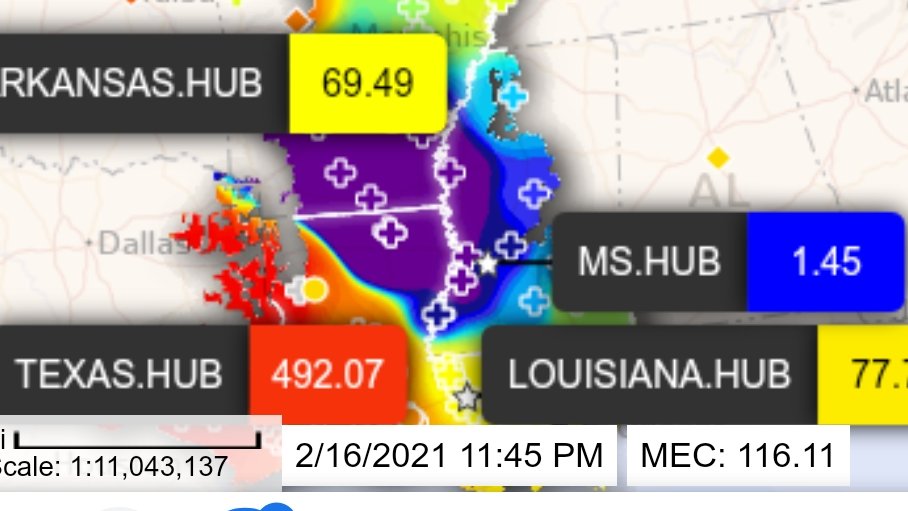
This past week has focused a lot on Texas' blackout and response to the polar vortex, Uri. There were also considerable problems in MISO South that are probably going to get ignored (except from MISO South customers, and regulators). So let's talk about it. Thread 1/8-
During Polar Vortex '21, aka, Uri...
MISO was importing (-) a lot of power from PJM (MIDA) almost 10GW, and also exporting (+) a lot of power to SPP (CENT) to keep the lights on, almost 5GW. 2/8
eia.gov/beta/electrici…
MISO was importing (-) a lot of power from PJM (MIDA) almost 10GW, and also exporting (+) a lot of power to SPP (CENT) to keep the lights on, almost 5GW. 2/8
eia.gov/beta/electrici…

TVA (TEN) began exporting (+) lots of power to MISO (MIDW) around Feb. 15 (Monday). As the storm moved eastward, exports turned to imports. Unclear: Was power moving from TVA > MISO North (better connections), or MISO South (needed it more)? 4/8 

Southern Pool (SE) exported (+) some to MISO (MIDW), but sent more power to TVA (TEN) as the storm moved east. Even Southern relied pretty heavily on imports (-) from the Carolinas (CAR). 5/8 eia.gov/beta/electrici… 

Power was flowing and moving from the east coast all the way to Oklahoma/Texas. But down in MISO South (SE TX, LA, MS, AR), power had a hard time getting around...6/8 energycentral.com/c/gr/observati… 

...and even moving power between Mississippi and Texas. Electricity prices in TX were at least 339x higher than power in MS. In an efficient market, prices should be pretty similar. MS lost money. TX lost power. Everyone loses. 7/8 

Transmission expansion improves power flow efficiency, and can help prevent blackouts, while reducing costs. Spend a little, save a lot. energycentral.com/c/gr/observati… 8/8
I'll also note, MISO South has no wind farms. And the MISO market is radically different from the ERCOT/Texas market. So if you're blaming wind farms or the ERCOT market for problems, you're missing the mark. 9/8
@threadreaderapp unroll
• • •
Missing some Tweet in this thread? You can try to
force a refresh



